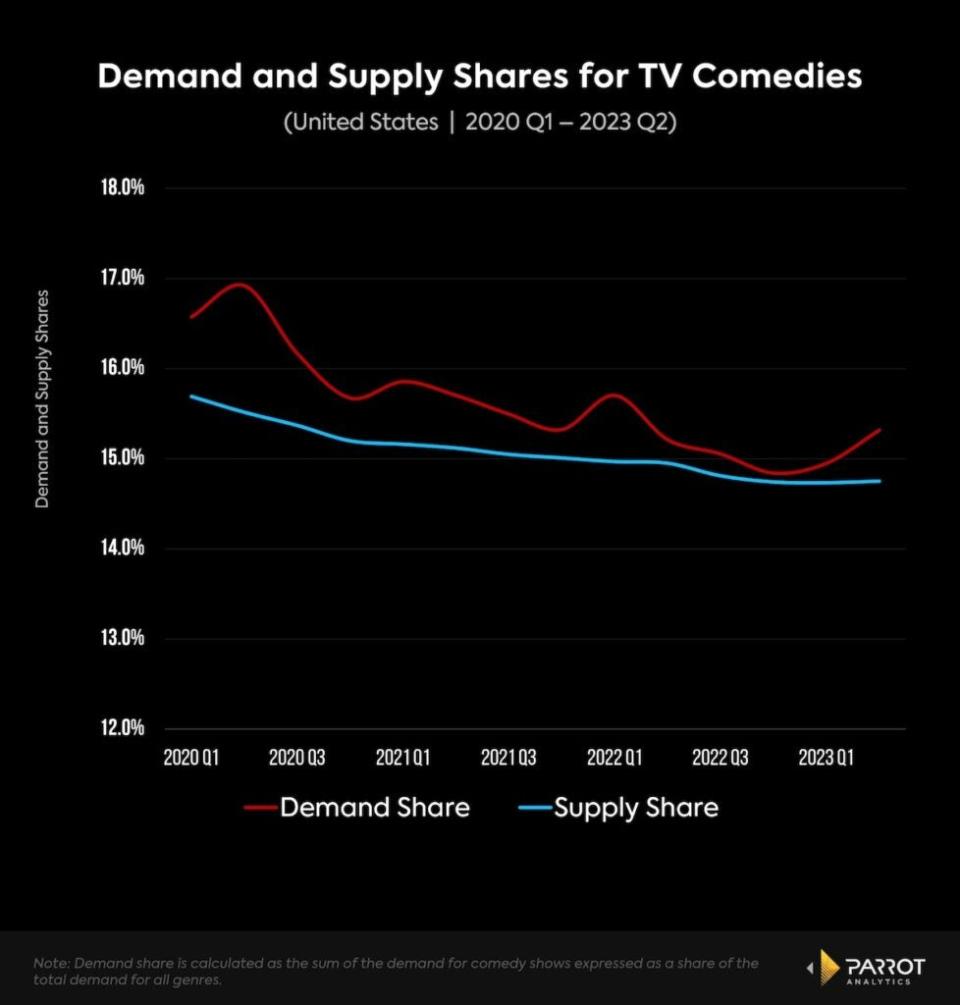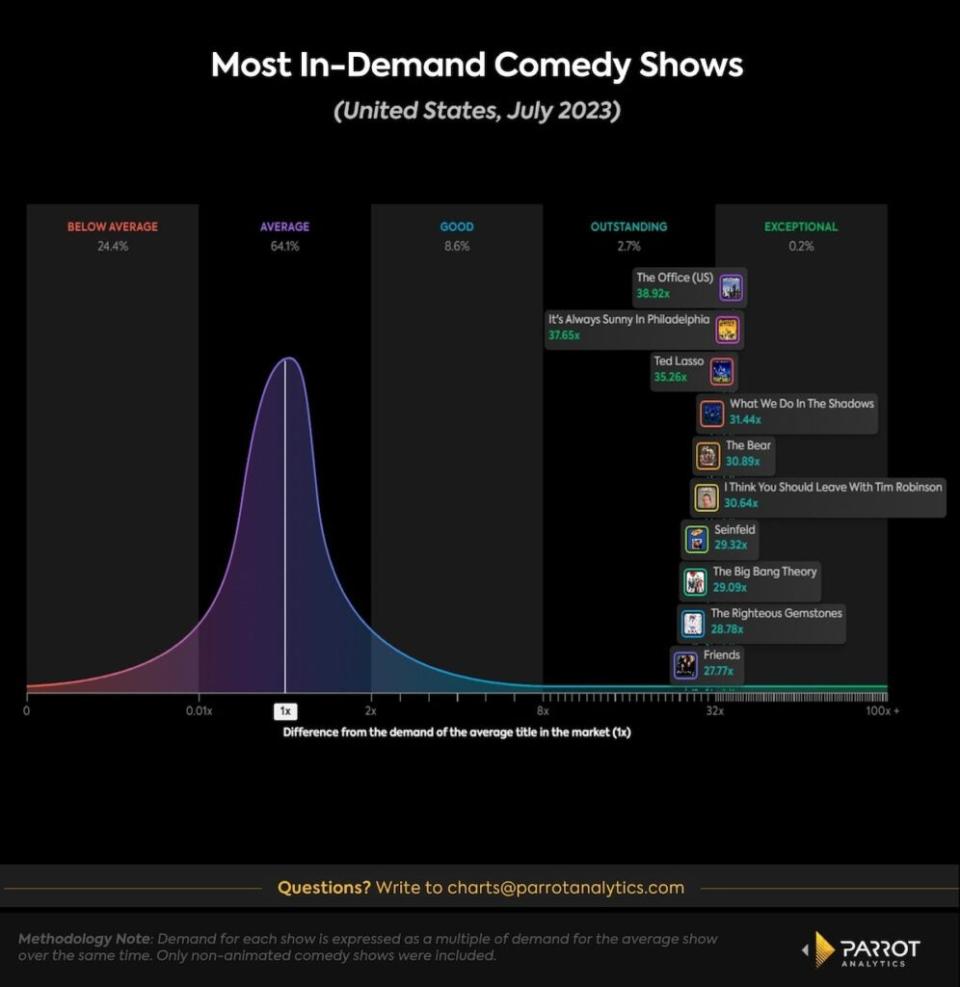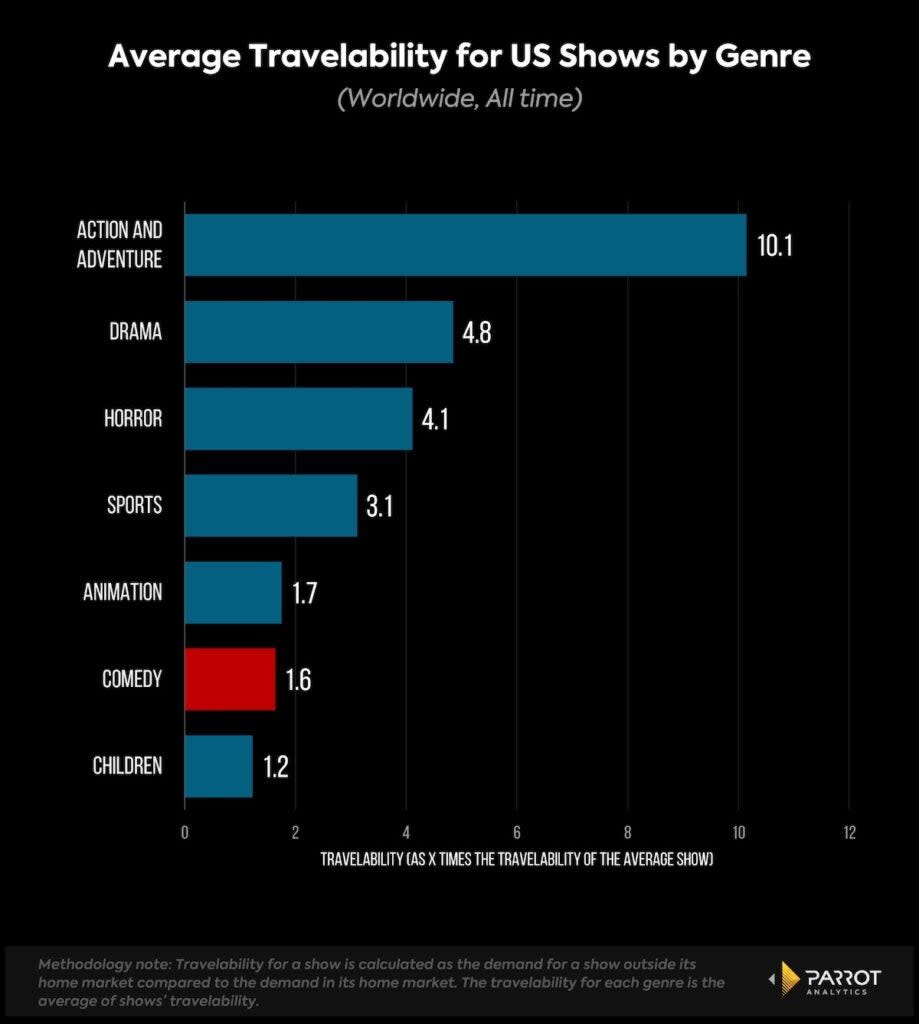New Comedy Shows Struggle to Take Hold as Classics Remain in Heavy Demand | Charts
From the inception of television and the earliest variety shows to present-day sitcoms and stand-up specials, comedy has woven itself deeply into the fabric of American broadcasting. From slapstick to sitcoms, the genre has not only entertained audiences but shaped the zeitgeist.

Is there a problem with America’s funny bone, though? According to Parrot Analytics data, which tracks demand from a variety of sources, comedies accounted for 16.6% of TV series demand in the U.S. in the first quarter of 2020. This figure saw a brief uptick during the early pandemic days but then dipped to 15.3%.
On the supply side, the production of comedy TV series has also seen a modest decrease, sliding from 15.7% to 14.8% of industry output.
The predominance of big superhero and fantasy franchises in the movie and TV industry, which have arguably altered audience tastes, and the focus of producers and distributors on more universal themes are contributing factors to this decline — along with the prevalence of comic themes and tropes in other genres.
Yet audiences have retained a sustained interest in classic comedies. Four of the 10 most in-demand shows in July were sitcoms, with “The Office” leading the pack, followed by perennial favorites such as “Seinfeld,” “Friends” and “The Big Bang Theory.” Even “It’s Always Sunny in Philadelphia,” which is still airing new episodes, is nearly two decades old.

Modern popular comedies reflect a departure from that popular tradition. Consider a show like “Ted Lasso,” the acclaimed Apple TV+ original, which blends sports with comedy and drama in hour-long episodes. “What We Do in the Shadows” leans on its mockumentary style and horror roots, “The Bear” artfully infuses drama with comedic elements and “I Think You Should Leave with Tim Robinson” revives the sketch comedy format. This evolution indicates a shift towards a more hybrid comedic formats, blurring drama and humor, as well as different presentation styles, to cater to contemporary tastes.
Another point of contention for comedies is their travelability, or how well they fare outside their home markets. Comedy ranks low in terms of international appeal, trailed only by children’s shows, according to Parrot Analytics data. With an average travelability score of 1.6, American comedies lag far behind genres like action and adventure, which boasts a whopping score of 10.1.

This disparity is largely due to comedies’ inherent reliance on local cultural context and references, making them challenging to translate universally. As international viewership grows in importance, producers are naturally inclined to invest in content with broad global appeal. (“Ted Lasso” may be the rare example of a comedy that travels well.)
So while comedy remains an essential component of the American television experience, its role and format are undeniably evolving in response to the economic and cultural pressures of the increasingly global streaming business.
Daniel Quinaud is a senior data analyst at Parrot Analytics, a WrapPRO partner. For more from Parrot Analytics, visit the Data and Analysis Hub.
The post New Comedy Shows Struggle to Take Hold as Classics Remain in Heavy Demand | Charts appeared first on TheWrap.

